Are you ready to start lifting weights after giving birth?
Most women should be able to lift weights six weeks after a vaginal delivery. If you had a c-section, waiting eight to ten weeks before lifting anything heavy is best.
The time frame depends on how fast you heal and how active you were before pregnancy.
It’s also essential that you follow a step-wise progression as you get stronger.
Keep reading to learn more.
Is It Safe To Lift Weights After Giving Birth?
It is safe to lift weights after giving birth as long as you follow a few key safeguards. Lifting weights will help your body regain lost strength and mobility after delivery.
The reason is that many of your muscles become loose and weak after pregnancy. The most important of which include your core and pelvic floor muscles.
That’s why all moms should do some form of exercise after giving birth.
But it’s also essential not to lift weights too soon postpartum. There’s a reason why we tell you to wait.
Lifting Weights After A Vaginal Delivery
Generally, you can lift weights six weeks after an uncomplicated vaginal delivery.
You may have to wait longer if you had any significant postpartum complications.
If you don’t feel ready to lift weights by the 6-week mark, that’s okay!
Do not feel bad, and do not rush the process!
I have seen hundreds of women at their 6-week postpartum visit who aren’t ready to return to their routine.
Every mom is different. I cannot stress that enough.
If you feel ready, check in with your doctor before you start lifting.
Lifting Weights After A C- Section
If you had a c-section, you could start lifting weights after eight to ten weeks. That may seem like a long time but understand that a c-section is major abdominal surgery.
Some women might be ready sooner, while others won’t.
So why do you have to wait so long?
Well, you have a scar on your lower abdomen that is approximately 10 cm wide! We also have to cut through several layers of tissue to get the baby out.
Each of these layers must heal before you can do any strenuous activity.
When we see you at the 6-week postpartum visit, we will assess how your body is healing. At that point, we can give you more personalized information.
What To Expect The First Week Postpartum
Now let’s talk about what to expect in the early postpartum period.
You can expect to be sore whether you had a vaginal delivery or a cesarean section.
Many muscles must stretch to their full capabilities to get a baby out :). This soreness will get better over time.
Here’s what you can do to get started.
The First Type of Exercise You Should Do
Walking is the most important thing you can do after you deliver.
In fact, we expect you to start walking on postpartum day 1. (Unless you had a major complication).
Walking will help improve circulation and activate the muscles of your hips and core.
It will also help prevent the formation of blood clots, aka DVTs.
Start slow, and increase the amount of walking you do each day.
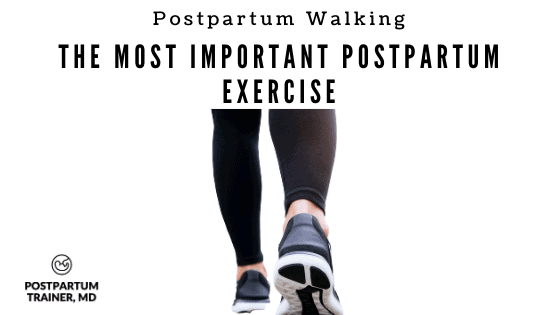
Walking will help improve your total body circulation, and begin activating weak muscles of your hips and core.
It will also help prevent the formation of blood clots, aka DVTs.
Start slow, and increase the amount of walking you do each and every day.
I discuss the benefits of walking in the postpartum period in my post: Getting Fit After Pregnancy
The Second Best Exercise You Should Do
What’s an OBGYN’s favorite exercise? It’s kegel exercises.
It should be yours too. The kegel exercise is a pelvic floor strengthening exercise.
To do it, you must squeeze all the muscles in your pelvis as if trying to prevent yourself from pooping.
Sorry, that’s a gross image.
But it’s the best way to explain the exercise.
Hold that muscle contraction for a few seconds, and then release. It would be best if you did this exercise every day, many times a day.

The Third Most Important Postpartum Exercise
Next, we need to do some abdominal exercises. Don’t worry; you won’t be doing exercises like sit-ups or crunches. Those place too much pressure on your belly.
You can start with low-risk exercises like these breathing movements. These are simple ways to strengthen your abdominal muscles.
How To Ease Into Activity Over The Next 2-3 Weeks
Most women go home on postpartum day 2 (from a vaginal delivery) or postpartum day 3 or 4 (from a c-section).
At this point, you should be able to walk some.
Take these next several days to get comfortable walking more and more. If you had a challenging c-section, do your best to get some movement every day.
Over the first 2-3 weeks, you can include other types of activity into your routine.
3 Useful Stretches To Help You Get Back Into Lifting Shape
Now is a good time also to include some gentle stretching like yoga.
But do not overexert yourself.
If anything hurts, then STOP.
If you feel too much pressure on your uterus, then STOP.
You don’t have to do anything spectacular. Simple 5-10 second holds will be enough in the beginning.
Try these three stretches to improve your range of motion.
Chest Opener
To perform this stretch, face the corner of a wall and place your elbows on the sides. Then lean forward with your feet flat on the ground while maintaining a neutral spine.
Here is what it looks like:
Hold this position for three sets of 10-15 seconds.
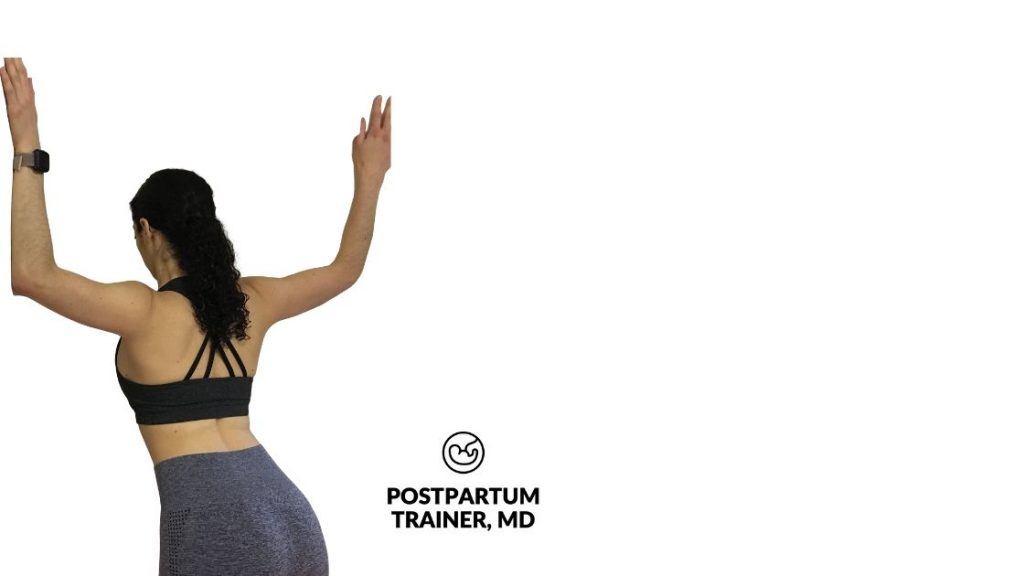
Standing Lunge
To perform this stretch, find a chair or box at knee level. Lift your leg onto the chair and lean forward. Keep the back leg straight and maintain a neutral spine.
Hold this position for three sets of 10-15 seconds on each side.
Here is what it looks like:
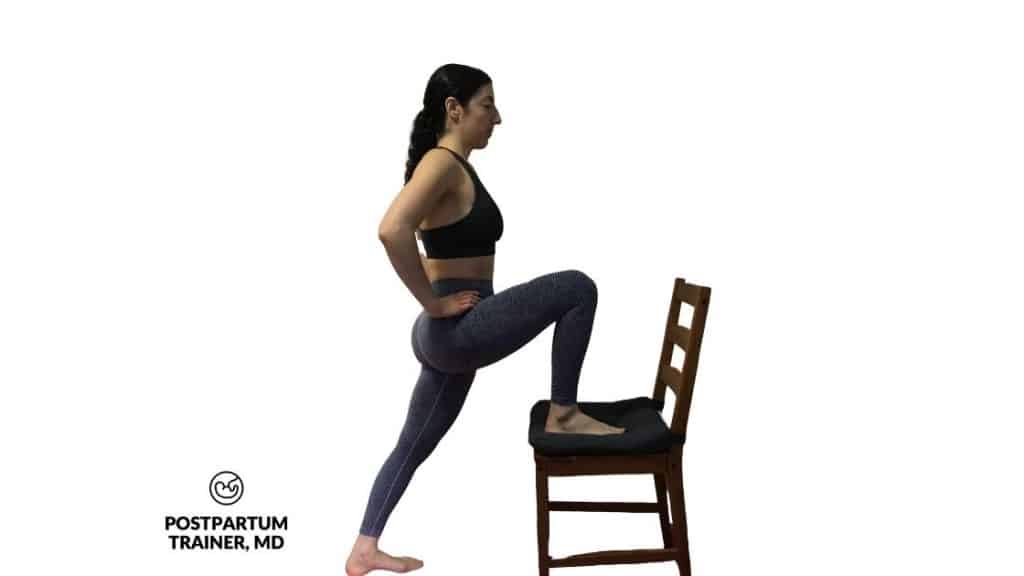
Lying Knees To Chest
To perform this exercise, lie on your back and bring your knees to your chest. Grab the outside of your lower legs and pull them up towards your chest while keeping your hips open.
Hold this position for three sets of 10-15 seconds.
Here is what it looks like.
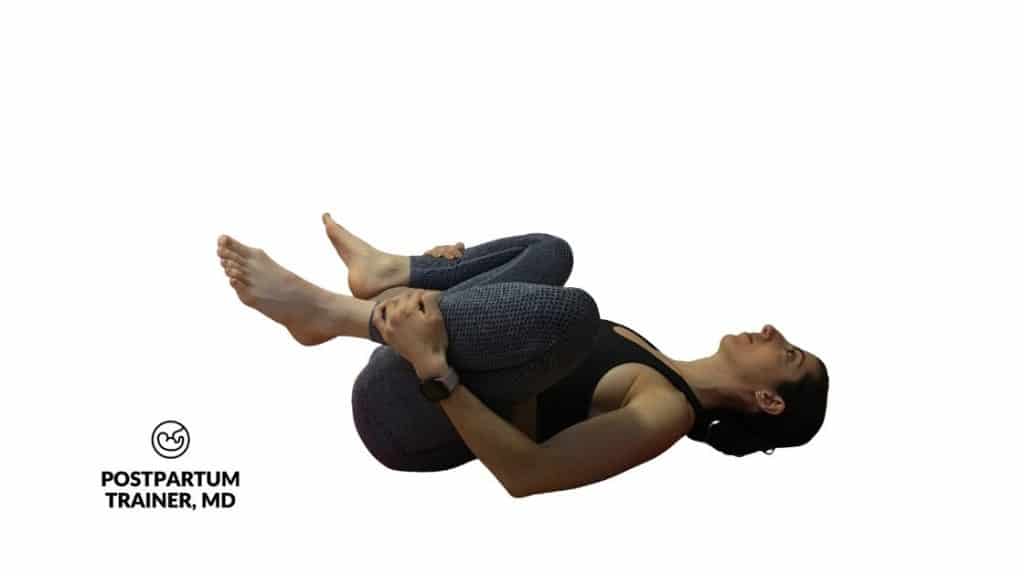
Simple Bodyweight Exercises That Are Safe Postpartum
Another thing you can start doing at this point is bodyweight exercise. (Only if you feel ready for it).
The best way to do this is to start with the squat.
Check out my post on squatting after giving birth to learn more.
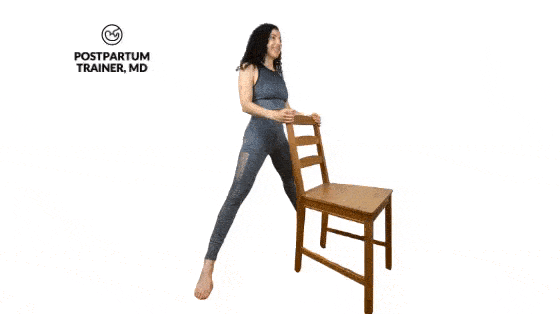
Another low-impact exercise you can do for your upper body is the wall push-up.
To perform this exercise, place your hands on a wall and lean forward. Keep your body straight and bend at the elbows.
Here’s what it looks like.
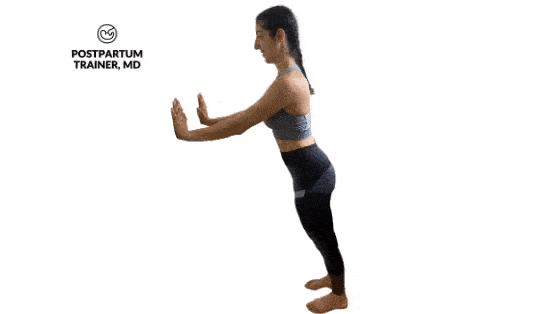
Over the next few weeks, you should continue with these bodyweight exercises to prepare your body again for weights.
Continue to Strengthen the Pelvic Floor
Remember those kegel exercises we talked about? Keep on doing them.
A strong pelvic floor is essential for postpartum health. Continue doing Kegels every day, at least three times a day.
Related Post: The Best Pelvic Floor Exercises For Postpartum
What To Expect By Your 6 Week Postpartum Visit
Okay, you’ve made it to your postnatal check up.
If you had a vaginal delivery, you might be feeling pretty good. If you don’t, that’s okay. Your doctor can tell you if they see anything medical that needs attention.
If you had a C-section, your incision is likely healed by now. You may still experience soreness in your abdominal region- that’s normal.
But this soreness shouldn’t prevent you from moving.
You can begin gentle bodyweight exercises at this point if you haven’t already.
If you have been doing bodyweight exercises, you may be ready to start lifting some weight.
But as always-
Get Clearance From Your Doctor First
If you had no postpartum complications and everything checks out: I.e.
- Your vital signs are normal.
- Your perineum is healed.
- Your physical exam is normal.
You will likely get clearance to start lifting weights.
If you had a C-section, your doctor will examine the scar tissue and do a physical examination.
If everything is normal, your doctor may give you clearance for bodyweight exercises. (Assuming you haven’t yet started.)
Do Not Expect To Get Right Back Into Your Routine
Do not expect to do your regular workouts right away.
Now isn’t the time to try and set personal bests or return to heavy deadlifts. You will need to train like a beginner again.
Why?
Your muscles are still loose and weak. These changes are due to the hormone relaxin, which can take a few months to leave your system.
You can risk straining your muscles if you go too hard too soon.
Here are some tips for getting back into it.
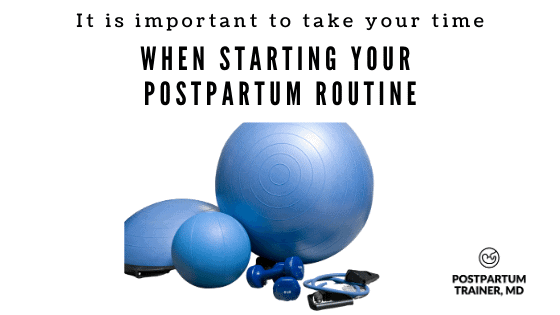
Tips For Starting To Weight Training Again
Start Low
Use the easiest variation of each exercise possible. If this means using a machine, then use a machine. If you usually use a barbell, then use dumbbells.
Don’t go back to the gym and immediately do three sets of 12 of five different exercises. Instead, do 1-2 sets of 5-8 repetitions of two to three movements.
Use the Empty Barbell
Once you get back to the barbell, start with the empty barbell. You will need to relearn exercises like the squat and the deadlift.
If you are using dumbbells, start with the 10-pound dumbbells.
Do not be shameful.
Swallow your pride and do it right.
Stay Hydrated
It is crucial to stay hydrated, especially if you are breastfeeding.
Drink at least 1 cup of water with every single meal. Once you get back to a workout routine, drink another 1-2 cups throughout the day.
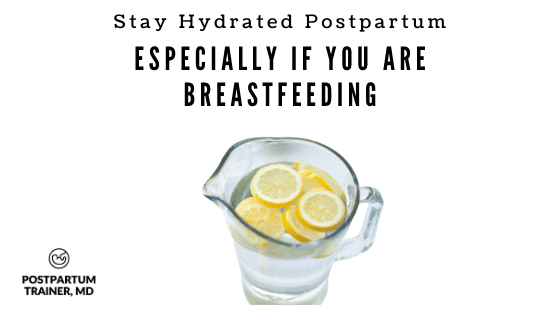
Staying hydrated will help prevent fatigue from dehydration as well as muscle cramps.
Take At Least Six Weeks To Work Up
After you return to the barbell, work your way up in a controlled manner.
Use the concept of progressive overload to gradually increase your weight.
In other words, add 5 to 10 lbs to an exercise every week, not 20 lbs.
Or you can do more reps of an exercise—or more sets. There are many ways to make progress.
TAKE YOUR TIME and go at your own pace.
Things To Look Out For
As you continue your routine, pay close attention to how your body responds.
In these situations, you must use your intuition. Listen to your body as much as possible.
Here are three obvious things to look out for:
Pain
If any exercise hurts, then don’t do it.
There are so many different variations of exercise that you can do. Find something that doesn’t hurt and do that instead.
Don’t take the risk of injuring yourself.
Coning
Coning occurs when your abdominal muscles separate during vigorous exercise.
If you notice this happening, stop that particular activity.
Learn more about coning here.
Heavy Bleeding
I have written about exercising in the postpartum period and bleeding in a previous post.
If you stick to these guidelines, you likely won’t experience increased uterine bleeding.
But if you do, stop lifting weights and talk to your OB.
Worsening Incontinence
Many women experience urinary incontinence after giving birth. During pregnancy, the pelvic muscles and ligaments that support your bladder get weak.
These weak pelvic floor muscles have a tough time controlling urine leakage.
Some patients may even develop pelvic organ prolapse.
Kegel exercises are the first-line treatment for this type of incontinence. Stop lifting weights and see your provider if you notice significant symptoms.
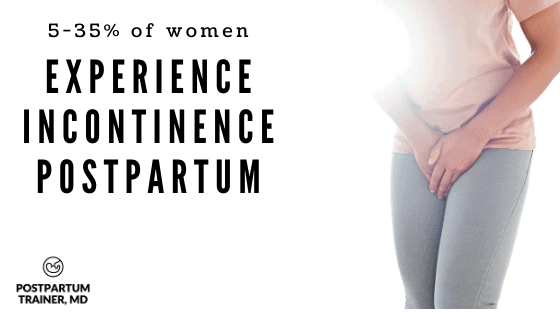
Kegel exercises are the first-line treatment for this type of incontinence. If you notice significant or worsening symptoms, stop lifting weights and see your provider.
What About Core Exercises?
You cannot do traditional core exercises immediately postpartum. The reason is that your abdominal muscles are weak and elongated.
In fact, it is natural for your rectus abdominis muscles to separate. Abdominal muscle separation is a condition known as diastasis recti. Here’s how to check and see if you have it.
I also have a post on 100 corrective exercises you could perform to help fix this problem.
What About Cardio Postpartum?
Cardio is another topic I have covered in my post: Running Postpartum.
You can generally return to cardio or aerobic-based exercise sooner than weight lifting.
It depends on the type of cardio you are doing.
In general, you can do low impact exercises like jogging six to twelve weeks postdelivery.
Final Thoughts
Lifting weights is one of the best things you can do for your health.
If you have already lifted weights in the past, start low and slow.
Always get clearance from your provider, and listen to the signals coming from your body.
In the meantime, remember to do your pelvic floor exercises and build up your abdominal wall.

Posts Related to Working Out in The Postpartum Period
- What Activities Are Restricted Postpartum
- Four Easy Postpartum Workouts for Beginners
- Getting Fit After Pregnancy [A Step by Step Guide]
Get Four Free Workouts To Help Strengthen Your Pelvic Floor & Heal Your Mommy Tummy!

Brittany Robles, MD, MPH, CPT
Brittany Robles is a full-time OBGYN physician, a NASM certified trainer, and a prenatal and postnatal fitness specialist. She holds a Master of Public Health degree in maternal health with a special interest in exercise and nutrition. She is also the co-author of The White Coat Trainer. Learn more about her here.
Sharing is Caring – Send This To A Mom In Need!
